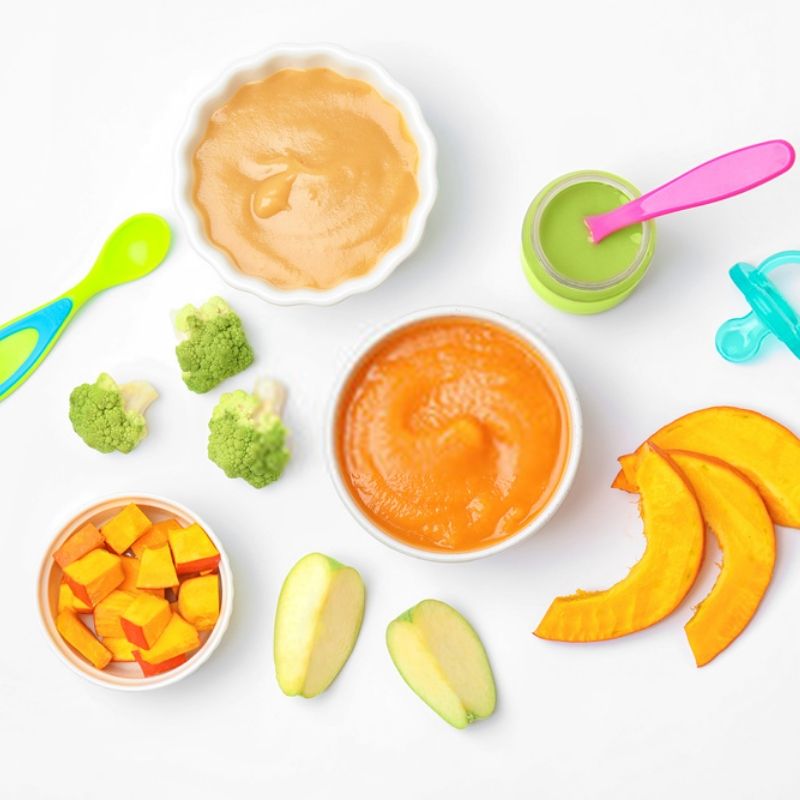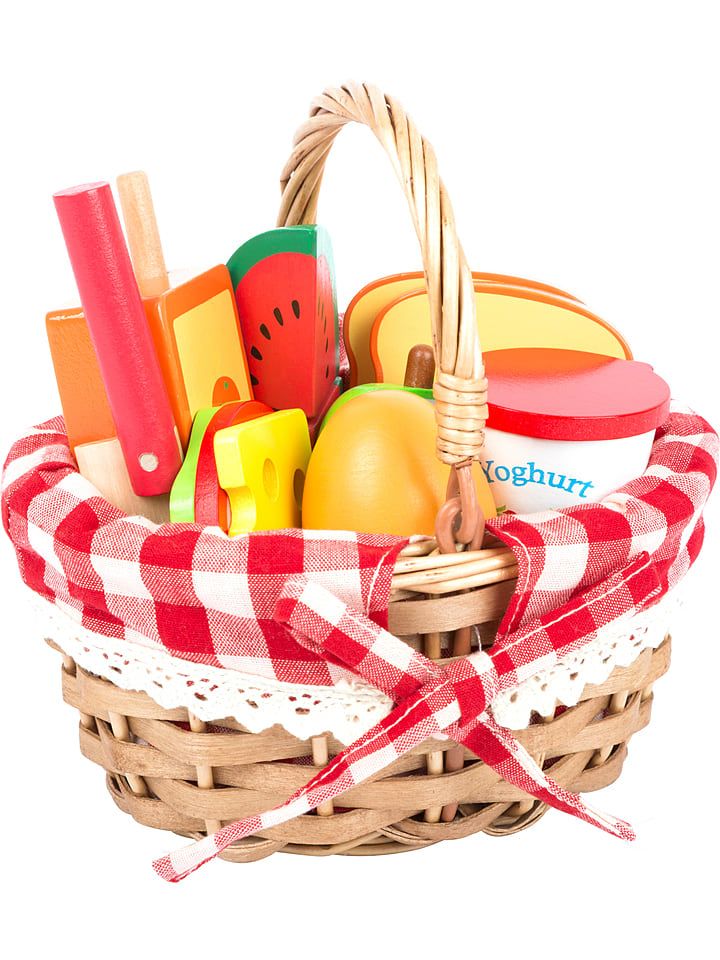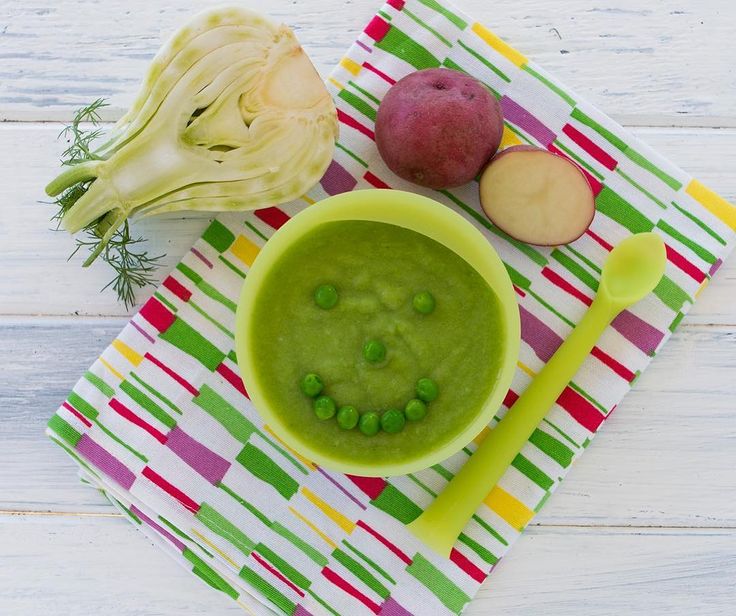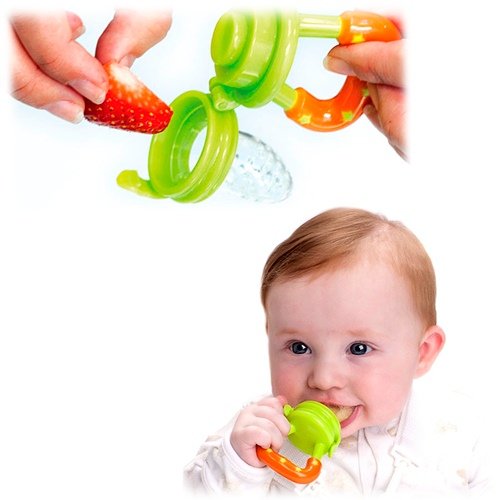Indian food for 18 months old baby
Baby food recipes - 6 to 18 months
By Swasthi on August 26, 2022, Comments, Jump to Recipe
Baby food recipes – A collection of homemade Indian baby food recipes for 6 10 18 months babies. If you are a new mum, you can check this Baby food chart for 6 months baby. If you have a baby older than 7 months then you can check this Indian baby food chart for 8 months & above. You can also take a look at the best foods to gain weight in babies & toddlers. This post contains a list of all Indian baby food recipes available on this blog.
I have also included a few sample baby food recipes in the recipe card. All the recipes are tried and tested and have been served for both my babies.
If your pediatrician has suggested you to start, then You can start with a single fruit, single veggie and then single grain. For more details please check this post on How to introduce solids to baby.
I highly recommend reading every line of the baby food posts on this blog as they can guide you extensively.
Baby food recipes – babies above 6 months
How to make baby rice cereal
Apple rice
Ragi porridge for babies
Apple Wheat porridge
Apple ragi (try ragi and apple separately first, then try together)
Khichdi for babies
Methi khichdi
Moong dal soup
Carrot almond baby food
Potato rice
Barley baby cereal
Sago carrot kheer for babies
Sabudana kheer for babies
Wheat cereal for babies
Soft idli recipe
Milk oats porridge
How to make ragi flour for babies
Oats porridge with vegetables (blend till smooth)
Sweet potato rice
Apple oats
Babies above 8 months
Sprouts soup
Urad dal khichdi
Raw banana rice
Ven pongal. please mash the rice well and remove the pepper corns. You can also puree it.
Curd rice. Puree if desired, skip tempering.
Curd oats
Moong dal halwa
Ragi idli
Baby food recipes for babies above 11 months
These need to be pureed before serving
Dalia khichdi
Oats vegetable khichdi
Sweet corn soup
Barley soup with vegetables
Chickpeas toddler food
Chickpeas soup (for babies above 15 months)
Badam milk. pls consult your doctor and use buffalo or goat milk, avoid cow’s milk.
pls consult your doctor and use buffalo or goat milk, avoid cow’s milk.
Set dosa
Banana milkshake
Lassi (avoid salt and sugar)
Neer dosa
Kambu dosa
Sample Indian baby food recipes
Prep Time10 minutes
Cook Time20 minutes
Total Time30 minutes
Servings2
AuthorSwasthi
Ingredients for 6 months baby food recipes 1 – Any one of the following (refer notes)
- ▢ ½ banana
- ▢ 1 sapota
- ▢ ½ papaya
- ▢ 2 tbsp cooked rice
Ingredients for 7 to 8 months baby food recipes 2 (refer notes)
- ▢ 2 tbsp rice or 2 tbsps ragi or wheat flour
- ▢ 200 ml water
- ▢ 1 small apple or banana
- ▢ 1/8 tsp ghee homemade (refer notes)
Ingredients for 8 months baby food recipes 3
- ▢ 1½ tbsp rice aged rice
- ▢ 1½ tbsp dal (toor or moong dal)
- ▢ 1½ tbsp carrots chopped
- ▢ 200 ml water
- ▢ 1/8 tsp ghee homemade
Ingredients for 8 months baby food recipes 4
- ▢ 2 tbsp rice
- ▢ 1 baby potato or 2 tbsp chopped
- ▢ 1 pinch carom seeds powder (ajwain powder)
- ▢ ¼ tsp ghee homemade
Making 6 months baby food recipes
- ▢
Make sure you follow the 3 day test rule for every food you introduce.
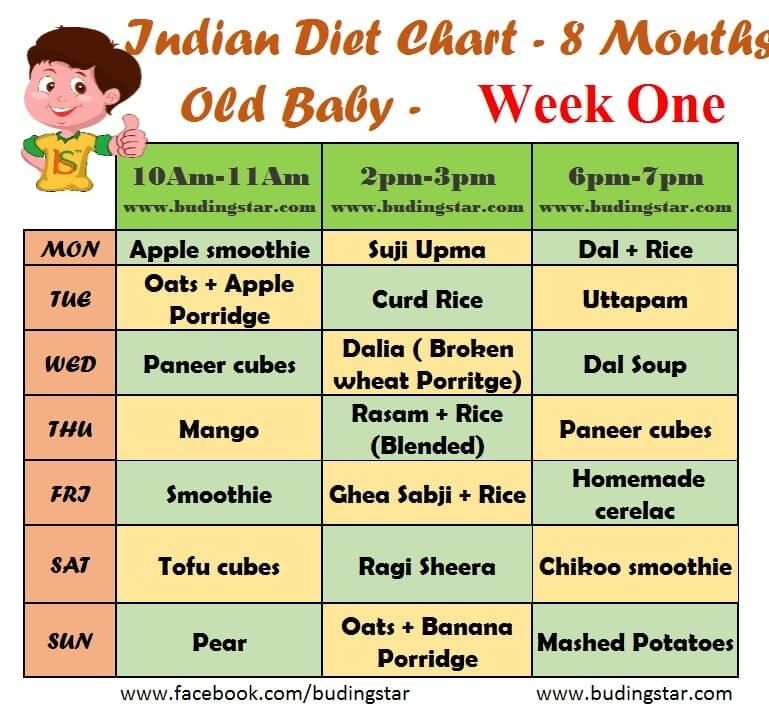 Wait for the results until 4th day.
Wait for the results until 4th day. - ▢
To make the baby food, Mash any one of the fruits – banana, papaya, sapota very well until smooth.
- ▢
If desired add it to a blender and puree until smooth. To thin down add a few spoons of boiled and cooled water. Fruit puree is ready.
- ▢
If using cooked rice, then puree together rice and any of the fruit – (banana, papaya, sapota or steamed apple) along with some boiled and cooled water. Fruit flavored rice is ready.
- ▢
You can also feed only steamed apple. Peel and chop the apples. Bring half cup water to a boil and add the apples to it.
- ▢
Cook until the apples are slightly tender just for a minute or 2. Cool and puree with rice or just the steamed apple. Apple puree is ready.
Making 7 months baby food recipes
- ▢
Wash rice and soak in water for at least 30 mins.
- ▢
Pressure cook on a medium flame for 2 to 3 whistles.
 You can also cook in a pot until soft.
You can also cook in a pot until soft. - ▢
Apple flavored rice cereal : When the pressure goes down, open the lid and add grated apple. Cover and cook for 2 to 3 mins. Cool and make a smooth puree. If needed add some boiled and cooled water. Add few drops of hot ghee. Apple flavored rice is ready.
- ▢
Banana rice cereal : Cool the rice completely. Add banana and rice to a blender and make a fine puree. Pour few tbsps boiled and cooled water if desired.
Making 8 months baby food recipes
- ▢
Wash rice and dal in a cooker or pot a few times until the water runs clear. Add grated carrots and pour water.
- ▢
Pressure cook for 2 to 3 whistles on a medium heat. If cooking in a pot add more water as needed.
- ▢
When the pressure goes down, using a masher mash the food to smooth. This is the stage you must be teaching you baby to eat mashed foods. Reduce feeding pureed foods. Add ghee to hot food and serve warm.
 Rice dal baby food is ready.
Rice dal baby food is ready.
Making 8 months baby food recipes
- ▢
Soak rice until water runs clear. Soak for 30 mins and cook along with potato until soft for 3 whistles. Mash the rice well and add ghee. Feed warm. To prevent colic you can add a pinch of ajwain powder. Potato rice is ready.
The nutrition values are only for the banana flavored rice. These are approximations only.
Please follow 3 day wait rule for every food you introduce.
Alternative quantities provided in the recipe card are for 1x only, original recipe.
For best results follow my detailed step-by-step photo instructions and tips above the recipe card.
Nutrition Facts
Baby food recipes
Amount Per Serving
Calories 45
% Daily Value*
Potassium 105mg3%
Carbohydrates 10g3%
Sugar 3g3%
Vitamin C 2.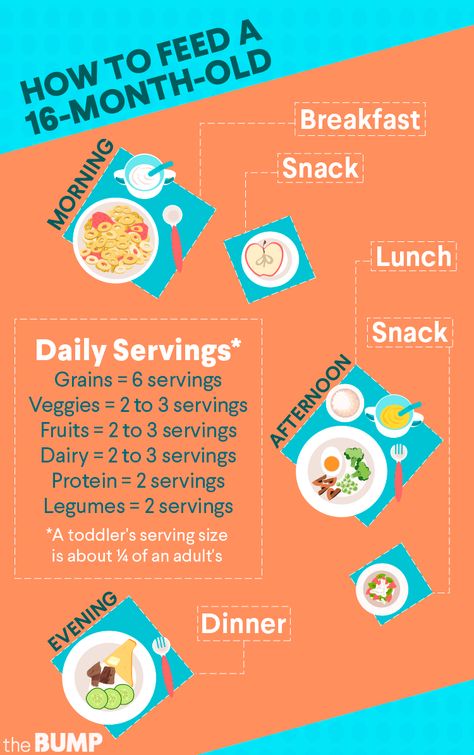 6mg3%
6mg3%
* Percent Daily Values are based on a 2000 calorie diet.
Tried this recipe?Mention @SwasthisRecipes or tag #swasthisrecipes!
© Swasthi’s Recipes
step by step
About Swasthi
I’m Swasthi Shreekanth, the recipe developer, food photographer & food writer behind Swasthi’s Recipes. My aim is to help you cook great Indian food with my time-tested recipes. After 2 decades of experience in practical Indian cooking I started this blog to help people cook better & more often at home. Whether you are a novice or an experienced cook I am sure Swasthi’s Recipes will assist you to enhance your cooking skills.
Follow Swasthi’s Recipes
Sign up to receive awesome Swasthi’s Recipes in your inbox *
Popular Recipes
Featured Recipes
12-18 Months Baby Food Chart
last updated: by Kalyani
12-18 Months Baby Food Chart -Now your tiny little bundle of joy is one year.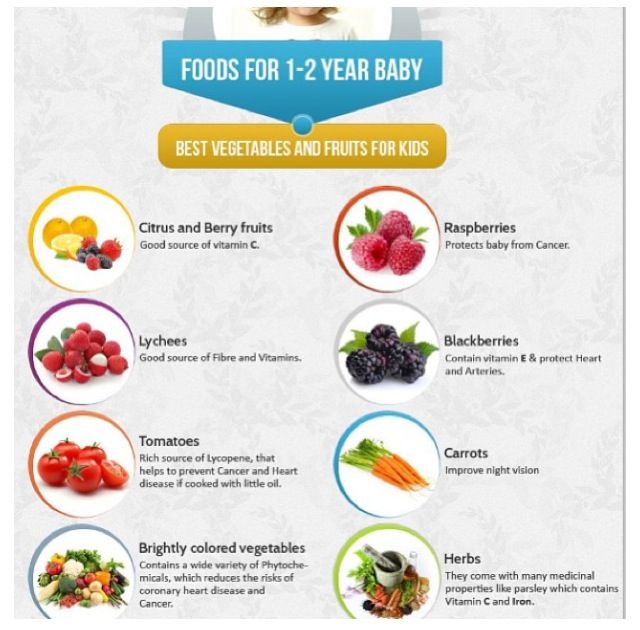 I am sure you have thoroughly enjoyed this beautiful journey with your baby:) You have watched as your baby grows from first smiles to first steps. By now, your baby is ready to enjoy a variety of family foods.
I am sure you have thoroughly enjoyed this beautiful journey with your baby:) You have watched as your baby grows from first smiles to first steps. By now, your baby is ready to enjoy a variety of family foods.
You can give all the foods you cook for your family with fewer spices. Offer a variety of food each day. Your child may have few front teeth now, can chew some foods. But it is still a good idea to mash or cut into small pieces (1/2 inch or less) while giving the meat or any hard foods if it is tough to chew.
Now your child is one year, she can drink cows milk. Cows milk is a readily available source of calcium, and it also provides essential vitamins and proteins for your child. Also, you can continue breastfeeding as long as you and your baby are comfortable.
How to introduce cows milk to my baby?Prefer whole milk until three years as toddlers need fat in their diet for growth and development.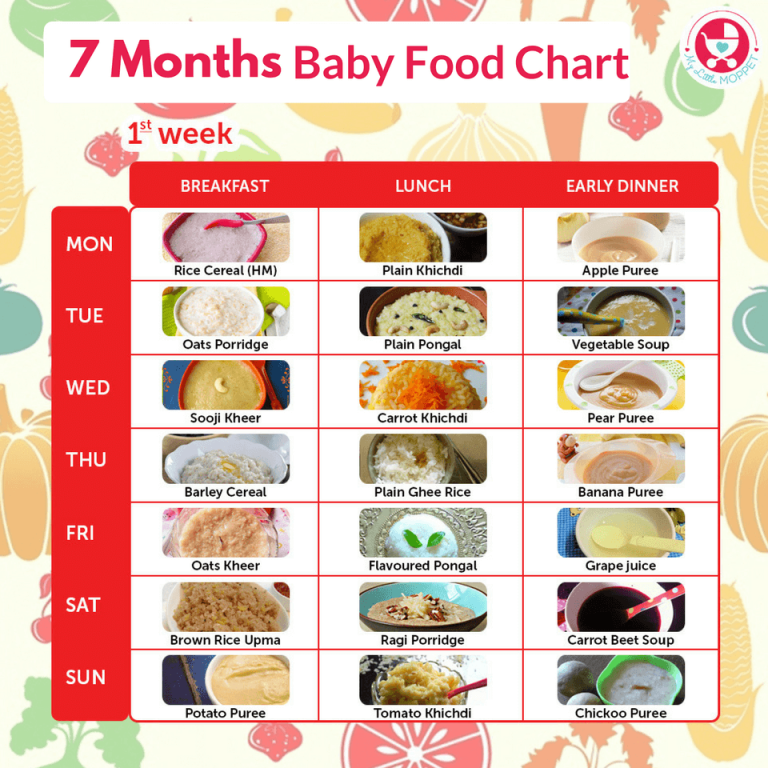 Give only 200 - 300 ml (at the max) of cows milk (in a cup) per day. Anything beyond the recommended amount of cows milk leads to less appetite in toddlers. Also, don't dilute the milk with water as it reduces its nutrition content.
Give only 200 - 300 ml (at the max) of cows milk (in a cup) per day. Anything beyond the recommended amount of cows milk leads to less appetite in toddlers. Also, don't dilute the milk with water as it reduces its nutrition content.
If your baby is not interested in taking plain milk, you can try to flavor the milk with natural homemade flavors, or add milk to porridge's/kheer/desserts or include dairy products such as curd/yogurt, paneer, cheese, etc.
Should my 12-18-month-old feed herself?By now, your toddler might be ready for self-feeding, though she might not be able to do it perfect. She should be able to hold and drink from a cup with little help and may be interested in eating with spoon/fingers. Foods can be cut into pieces so that she can be able to feed herself with fingers. Encourage self-feeding if your toddler is ready and eat as a family whenever possible. It helps in developing good eating habits.
What are the finger foods can I give to my toddler?Finger foods such as chunks of soft-cooked vegetables, fruits, cheese, toasted paneer, homemade cookies/crackers, boiled eggs are easy to prepare and mostly loved by children of this age, and they can experiment on feeding themselves.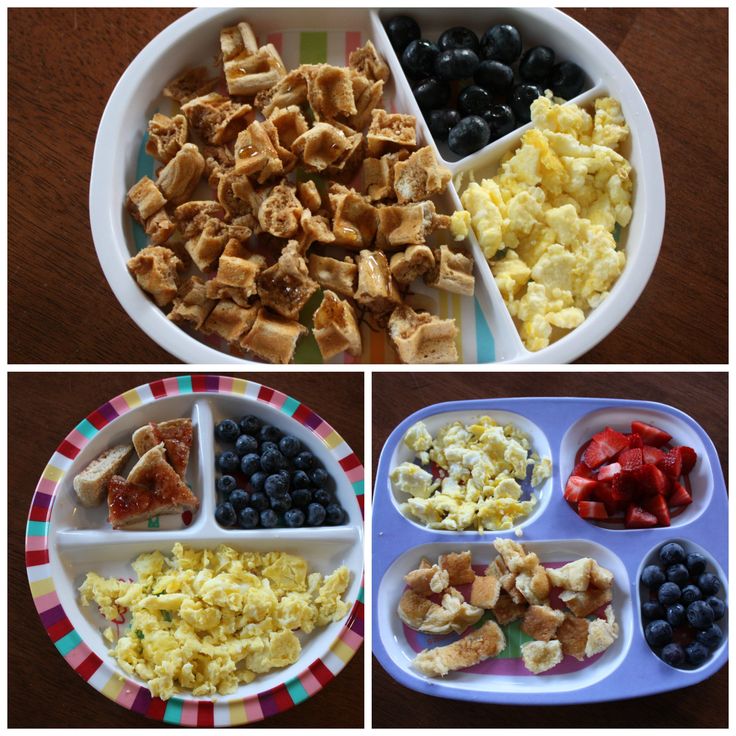
After one year, your baby's growth rate naturally slows down, and hence, your baby's appetite might have decreased than before. Also, your toddler might be interested in exploring the world around than eating. The quantity of food consumed on each day may vary from large to small amount depends on the appetite of your child. Be assured that your child knows when she is hungry, and they won't stuff needlessly.
How to encourage my fussy eating toddler?Here are some tips for the fussy eating toddler
- Never force your baby to finish the meal. Let them take their own time and enjoy the food. If your baby refuses food, try again a little later on.
- Encourage self-feeding by offering plenty of finger foods.
- Let your baby experience the food even it is more of playing and a mess.
- Offer a variety of nutritious small meals.
- Reduce sugary foods and avoid processed/junk food as much as possible.
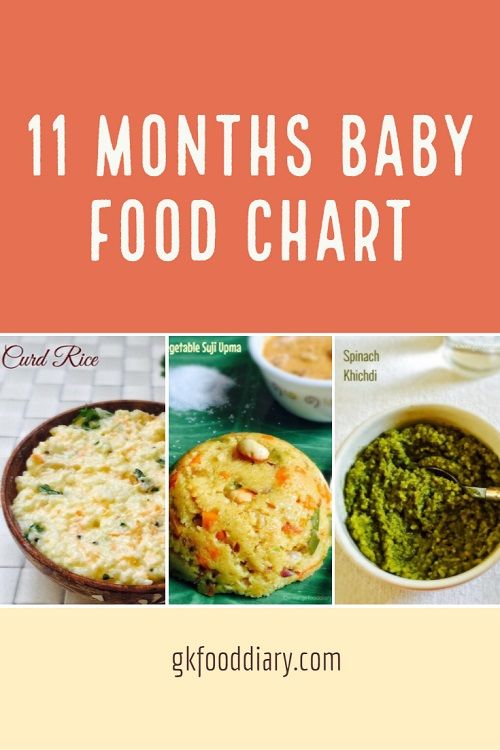
- Be an example for your child in food habits.
For 12-18 months baby, you can offer three meals, two snacks, and cows milk. If you are a breastfeeding mom, You can continue breastfeeding whenever your baby demands. Choose the timings for meal and snack according to your child's preference. Try to give food at regular intervals. If your child refuses food, try again a little later on.
How much quantity for 12-18-months baby per day?To ensure your child gets a balanced meal, aim for a variety of foods from four primary food groups as listed below. For the quantity of food, always be guided by your child's hunger as appetite varies from baby to baby, and most babies change from day-to-day. Here is an approximate amount, Offer a serving from within these portion size ranges at each meal and snacks.
- Whole Grains, Cereal & Carbohydrates - 1/4 cup to 1/2 cup
- Fruits & Vegetables -1/4 cup to 1/2 cup
- Milk & Dairy Products - 1 cup
- Meat/Protein/Meat Alternatives - 1/4 cup
Here is a sample food chart with recipes (please click on the hyperlink to get the recipes) for 12-18 months old baby. Please consider the below points before using this food chart:
Notes:- Never introduce more than one food at a time when adding new food to your baby.
- Check for allergy symptoms when you are introducing new food to your baby and stop feeding your baby if you find any signs.
- This food chart is prepared to give an idea of what foods can be included in babies diet.
 It should not be considered as medical advice.
It should not be considered as medical advice. - Always check with your pediatrician before introducing any new food.
Check out a variety of recipes for babies that are suitable for babies from 6 months to 5 years!
- Baby Food Recipes (from 6 months to two years)
- Toddler Food Recipes
- Healthy Weight Gain Food Videos for Babies
Food Advertisements by
Spices and passions. What food is considered healthy and unhealthy in India
Registration successful!
Please follow the link from the letter sent to
Spices and passions
What food is considered healthy and unhealthy in India
Olga Tsynskaya
Indian cuisine is famous all over the world. About why Hindus do not eat onions, garlic, tomatoes and beets, as well as recipes for chicken curry and Ganesha's favorite delicacy - laddu - in the RIA Novosti material.
Brijesh Chowdhury, chef from Mumbai
India knows how to create a culinary masterpiece from the simplest ingredients.
Our cuisine is based on three main ingredients: rice, seafood and freshly ground spices. It seems to be nothing special, but the Indians come up with such bizarre combinations by adding other products that the dishes become unique and are loved all over the world. It is curious: in our restaurants and cafes, mostly men cook, and only women cook at home.
Indian laborers picking fruit at a market near Hyderabad
Dairy products have a special place.
And this is understandable, because milk comes from a sacred animal for us - a cow. In the north of the country, ghee is often used - and this is also a symbol of well-being.
A cow in Rishikesh, India
© Fotolia / bawan
India is a predominantly vegetarian country.
It is forbidden to eat beef, again because the cow is a sacred animal. There are many Muslims in the country, so pork is rare here. But chicken and fish are popular.
Cooking in India is also an extremely complex philosophy.
Going on a gastro tour around the country, you need at least in general terms to study the basics of the Hindu creed about food, its types and methods of taking. Ayurveda, a system of Indian medicine, is known all over the world for its serious approach to nutrition. According to ancient tradition, the well-being, mood and fate of a person directly depend on the way of eating. All food is divided into three types.
Ayurvedic medicine
© Depositphotos / nilanewsom
Rajasic . Very tasty, spicy. Meat, alcohol. This stimulates the body and causes hyperactivity, irritability, promotes passion and ignorance.
Vindaloo with rice, a popular meat dish
CC BY-SA 4. 0 / Asen89 /
0 / Asen89 /
Tamasic . Fatty and sweet foods, canned food, pasteurized foods, flour products, reheated food. Such food makes a person stupid and lethargic.
Traditional Indian dish
Sattvic . Vegetables, cereals, fruits, juices, nuts, fresh dairy products. It has a beneficial effect on a person, fills with vital energy, is easily digested, cleanses the body, and calms the mind. It should be noted that food must be prepared in a favorable, positive environment, otherwise even a sattvic dish will become tamasic.
For example, onions and garlic are not liked in India.
It is believed that they make a person aggressive, awaken passion. Tomatoes and beets are also rarely eaten because they are the color of blood.
Red onion
Many sauces are used.
The most beloved and popular is chutney. Its taste is built on the contrasts of fruits, vegetables and spices. Chutney is even called differently: both sauce, and seasoning, and salty jam, and marinated compote. And they serve it both with the main dish and with pastries.
Chutney is even called differently: both sauce, and seasoning, and salty jam, and marinated compote. And they serve it both with the main dish and with pastries.
Green chutney
© Pixabay / Pixabay / PDPics
Indian cuisine is full of healthy sweets.
God Ganesha is depicted with a laddu tray in his hands. These are sweet balls of chickpea flour with nuts, butter, sugar and spices, rolled in coconut, sesame or almond crumbs. In Hindu culture, they symbolize abundance and prosperity.
Jalebi served with rabri. A popular Indian dessert
CC BY-SA 4.0 / Sahil tiwarie /
The meal is usually completed with "Indian chewing gum" pan - betel leaves, which are wrapped in crushed betel nuts and spices.
Both men and women chew. It is a good mouth freshener that is good for digestion.
Pack of betel leaves
© Depositphotos / tawintaew
Elvira Borislavskaya, connoisseur and lover of Indian cuisine
My first encounter with Indian cuisine can be called romantic.
I got carried away by this country: culture, traditions, history and, of course, food. An incredible variety of dishes with the simplest basic products at the base. But quite unusual for the uninitiated taste - new and unexpected. It's all about the spices and their combinations.
The discovery for me was that you can live without meat!
And I am a meat eater, what else to look for. But in six months in India, she only ate chicken once, and that was by accident. And no meat chips.
Indian feast
© Depositphotos / Rawpixel
These dishes are probably one of my favorites.
Kheer . A very popular pudding-like dessert in India. Remember when we were given sweet rice porridge in kindergarten? This is it, only in an Indian way: rice well boiled in milk, seasoned with cardamom seeds. Hindus cook khir on special occasions: for guests, for family and religious holidays, in honor of the birthday of Ganesha, for pujas for offering to Shiva.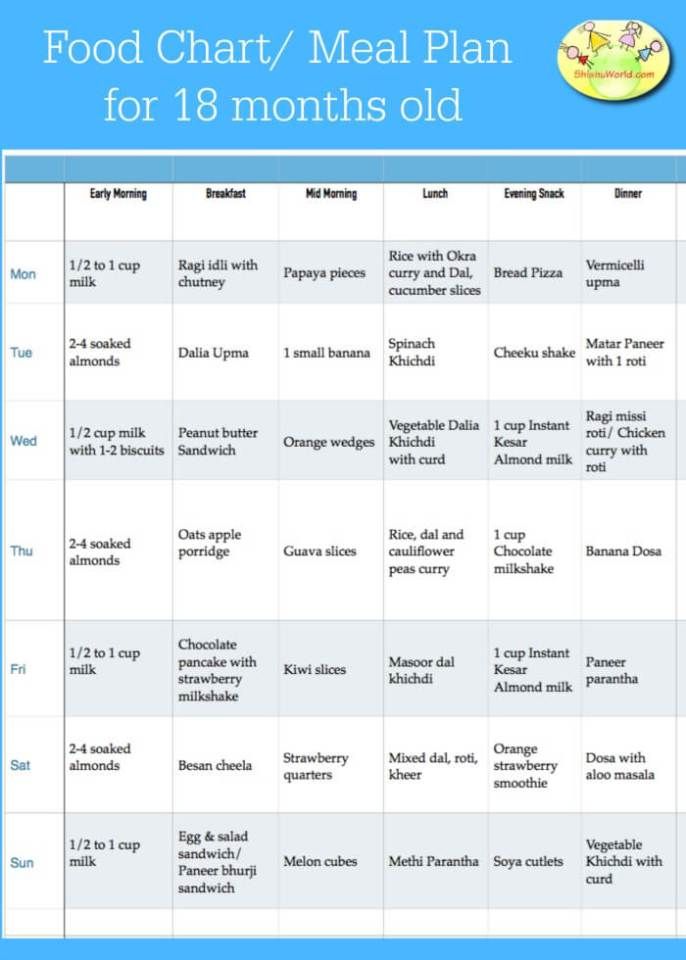 Served as the final dish of a festive feast. It is not only tasty, but also useful: it helps to remove excess salt from the body, to cope with swelling.
Served as the final dish of a festive feast. It is not only tasty, but also useful: it helps to remove excess salt from the body, to cope with swelling.
Kheer Sweet Rice Pudding with Nuts and Raisins
© Depositphotos / ALLEKO
Okra Curry . Faceted green pods, outwardly reminiscent of hot peppers. In India they are called "bhindi", in Europe - "okra", in Russia - "ladies' fingers", in the East - "gombo". A very simple, tasty dish. And a good side dish for any meat. Served both hot and cold.
Masala tea with milk and spices . This spicy Indian drink will warm both the soul and the body. Masala in India is a traditional mixture of spices and seasonings: cardamom, cinnamon, ginger, cloves, black pepper (or pippali pepper), and fennel seeds. By the way, in the West, the word "masala" is most often associated with a warm spicy drink prepared by boiling black tea in milk with spices. They drink it to keep warm and feel a surge of strength. Most gourmets note that this tea has invigorating properties and a wonderful aroma, which makes you want to enjoy life and love the whole world.
Most gourmets note that this tea has invigorating properties and a wonderful aroma, which makes you want to enjoy life and love the whole world.
Masala-tea is a good alternative to coffee, it tones well and is indispensable with drowsiness and lack of energy
CC BY 2.0 / Ute /
Recipes
Chicken Curry
Ingredients:
9000 Chicken Phile both white meat and red meat) - 800-850 gramsLarge onions - three to four pieces
Head of garlic (medium) - one piece
Zira - half a teaspoon
turmeric - one teaspoon
Garam Masala - one teaspoon (with a hill)
Acute pepper - one pod
ginger root (with walnut) - one piece
Cardamom - 2-3 grains
Sunflower oil - 30-50 ml0004 Wash and dry the chicken well, cut into pieces (I cut the thigh into four pieces). Place Greek yogurt, half a teaspoon of turmeric and garam masala in a bowl. Mix everything and put the chicken pieces in the marinade. Set aside and start preparing the curry sauce. Ideally, the chicken should be marinated for three to four hours. Chicken carcass on a cutting board © Fotolia / EBelikov CURRY SAUCE Grind onion, garlic, ginger and pepper in a blender. We should get a mixture of the consistency of liquid semolina. Pour cumin into a hot frying pan (cauldron). It should ignite, but not smoke, so do not forget to stir. As soon as it begins to darken and a fragrant smell appears, pour in the oil. Reduce fire to medium. In a thoroughly heated oil, put the mixture chopped in a blender. The most important process begins, it takes 20-25 minutes - we fry the base of the curry sauce. It should turn out to be a uniform ruddy-golden color, so it must be constantly mixed. Onion, garlic, pepper, ginger © Photo: Kira Kuvykova leave on fire, stirring. Then put the chicken in the same pan with the sauce, mix, salt, close the lid and reduce the heat to just below medium. Thirty to forty minutes the chicken boils - that's enough. You can let it brew for another 30-40 minutes. And everything is ready! LADDA Ingredients: chickpeas or wheat flour - 400 grams GHY oil or cream - 450 grams Board sugar or sugar powder - 250 grams of Grated hazelnuts or walnuts - two tablespoons Ground cardamom - half a teaspoon Cinnamon - one teaspoon PREPARATION: Melt the butter in a large pan, add the flour. While stirring, wait until it is fried, and add the grated nuts, coconut, cardamom and cinnamon. Cardamom © Depositphotos / ivan_dzyuba Turn off the fire, add sugar and wait until the mixture becomes viscous. When it cools down, make balls and place them in the refrigerator for several hours. bon appetit! 08:00 12/19/2021 (updated: 08:15 12/19/2021) 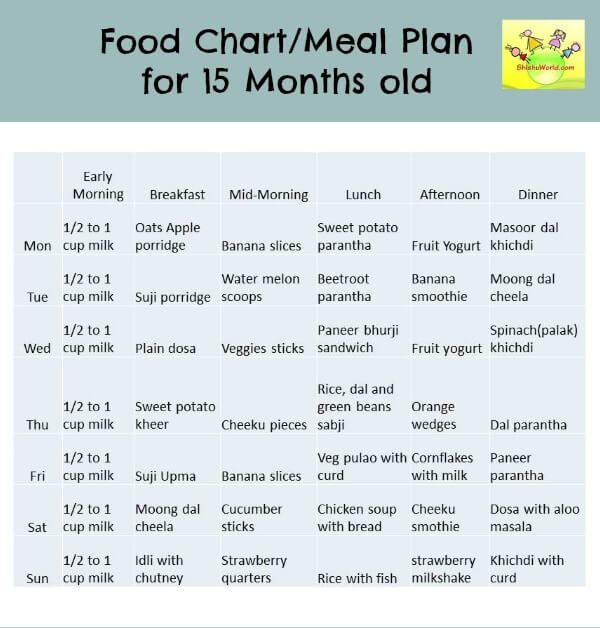 While the meat is drying, prepare the marinade.
While the meat is drying, prepare the marinade. 
0 9000
two tablespoons  Stir and cook for two more minutes.
Stir and cook for two more minutes. Two factors that strongly influence the mental development of children under 2 years old are named 17:50 Olga Muraya
Closer to the age of two, the most important functions for later life begin to form in the child's brain.
Photo Unsplash.
Both of these conditions depend on the habits of the young parents.
US researchers have found that poor nutrition and a lack of predictable home environments can negatively affect the development of important brain functions in young children.
These functions are called executive functions. These are higher-order cognitive skills that govern memory, attention, and emotional control.
According to caregiver surveys, children aged 18 months to two years who ate more sugary and processed foods were more likely to have difficulty with processes such as inhibition (important for concentration) and working memory, and also had lower ability to plan and organize.
Almost 300 families participated in the surveys. Their research is still ongoing, collecting data on children's eating habits, weight changes, social-emotional skills and family relationships. The children in the participants' families were about 6 weeks old at the start of the study.
Similar studies investigating the relationship between nutrition and performance have previously been conducted with older children and adolescents.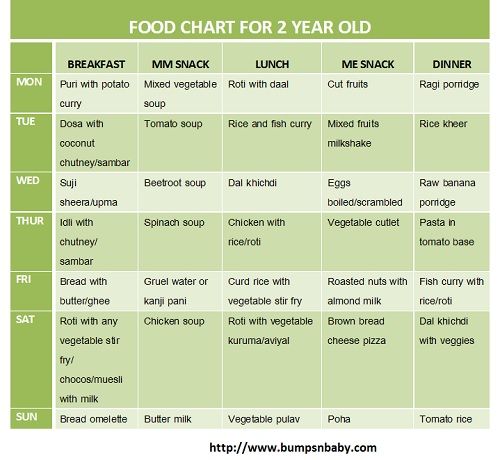
They associated domestic chaos (in Russia there is a similar term "difficult life situation") with behavioral problems and difficulty performing tasks that require a developed executive function, such as the ability to focus and control one's emotions.
The new study, for the first time, has focused on children between the ages of 18 months and two years, during which time they develop these vital skills. At the same time, eating habits and home environment can play a key role in the development of the psyche.
As a result, scientists have seen an association between the consumption of sugary snacks and processed (colored, flavored, etc.) foods and low levels of certain mental indicators, including emotional control, inhibition, planning, and organizational skills.
Even at such a tender age, the brain of children is already preparing for multi-level, complex activity, and the most ordinary diet can affect these skills.
The writing team hypothesized that in quieter households with predictable daily routines, the impact of poor nutrition on children's executive function may be lower. The positive impact of a calm and predictable home environment, according to the scientists, should have "nullified" the harm of sweets.
The positive impact of a calm and predictable home environment, according to the scientists, should have "nullified" the harm of sweets.
But instead of softening the relationship between executive function and food intake, as the team suggested, home chaos had a completely separate relationship with children's cognitive skills.
To mitigate the potential negative impact on children's cognitive skills, the authors propose the development of prevention programs that focus on interventions to help parents transition to a healthy daily routine and limit children's consumption of processed snacks and other unhealthy foods.
To better understand the associations found in the current study and how they persist or develop as children grow older, the authors plan to continue the study with the same families and their children, who are now 5-6 years old.
But also, according to the researchers, more research is needed with different racial, ethnic and social groups, as well as long-term projects and additional experiments.

